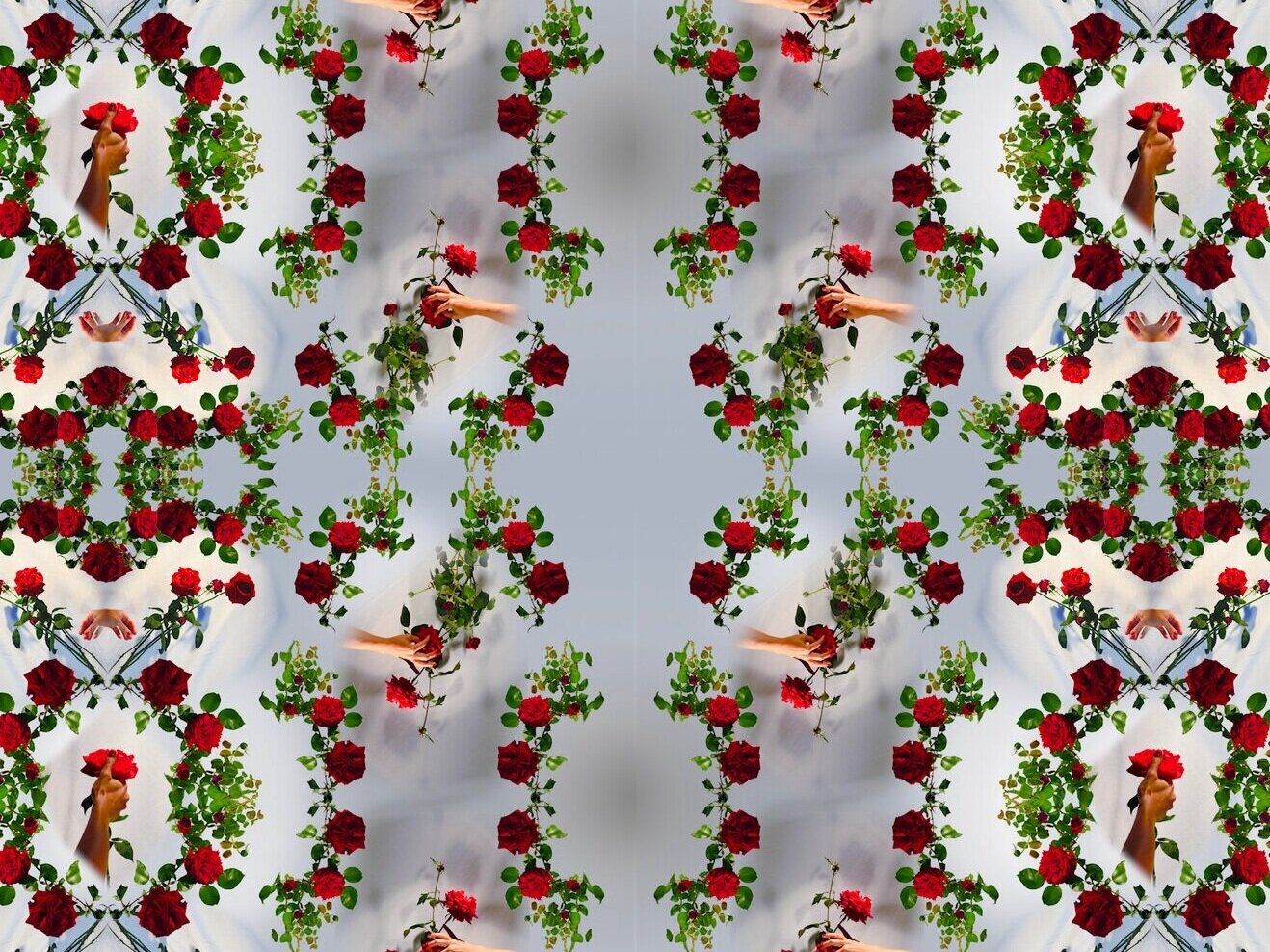
Emily Tanner-McLean
February 2020. Read about it in The Stranger!

‘Rose is a rose is a rose is a rose,' wrote Gertrude Stein. Like Stein, Emily Tanner-McLean plays by repeating this ubiquitous symbol for love. Throughout the installation, the rose reappears visually and sonically– in video 'wallpaper,' organic materials, and intimate audio compositions. Come ready to feel sentimental and uncomfortable with sentimentality.
Visitors are invited to spend the night in the gallery within the installation. Book Sun-Fri through Feb 16th. (No overnights Feb 14th.) Contact gallery for details home@thevestibule.org
Special Valentine's day event with audio composition. Feb 14th 6-8 pm.
Recommended in The Stranger Events!



Artist Statement (Excerpt)
Rose/rose/rose/rose probes the terrain between the red rose as a symbol and its traditional meanings to reveal nuanced significance behind these meanings, uprooting our understanding of the symbol itself. What happens to our understanding of the rose, this symbol, this object, when our relationship toward it changes? How sturdy are the guardrails separating admiration and disgust? Sanctity and profanity? Elegance and decadence? Desire and destruction?
Wallpaper originated among the elite as a mechanism for projecting wealth: plain walls were covered with hand-painted paper, making wood or plaster appear as marble or other precious materials. Wallpaper was later popularized among the middle-and working-classes in the Industrial Revolution (~1760 – 1840) when block printing and mass production allowed every household to adorn itself. Ironically, the machines like those printing scrolls of this product were the same ones that were destroying modern people’s relationship to nature. The most popular wallpaper pattern of the day was roses: if people couldn’t smell roses, they could at least surround themselves with copies of them.
In 1913, shortly after the Victorian Era, Gertrude Stein wrote her poem “Sacred Emily.” In 367 staccato lines, this piece recounts the everyday actions of a woman in her home and repeats numerous phrases, including Stein’s famous line: “Rose is a rose, is a rose, is a rose, is a rose.” For Stein, the repetition of words and concepts changes their implications. Rose is the name of a person, is a past-tense of a verb, is a color, and a flower. A rose is not an object, not just a thing, but a thing with many meanings.
As Stein does, the exhibition investigates the obvious - the rose, the symbol of love - to expose its obscurity, to alter and expand its definition.
